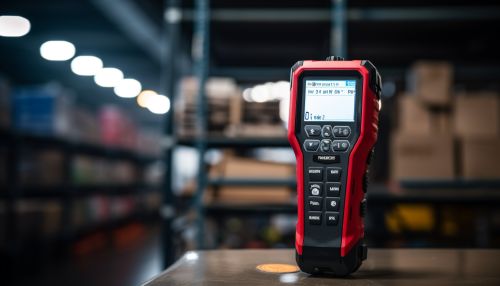Gas detector
Introduction
A Gas detector is a device that detects the presence of gases in an area, often as part of a safety system. This type of equipment is used to detect a gas leak or other emissions and can interface with a control system so a process can be automatically shut down. A gas detector can sound an alarm to operators in the area where the leak is occurring, giving them the opportunity to leave. This type of device is important because there are many gases that can be harmful to organic life, such as humans or animals.


Types of Gas Detectors
Gas detectors come in several types:
Electrochemical Gas Detector
Electrochemical gas detectors work by allowing gases to diffuse through a porous membrane to an electrode where it is either chemically oxidized or reduced. The amount of current produced is determined by how much of the gas is oxidized at the electrode, indicating the concentration of the gas. Manufactures can customize these detectors to detect specific gases, such as carbon monoxide, chlorine, and nitrogen oxide.
Semiconductor Gas Detector
Semiconductor gas detectors, also known as metal-oxide-semiconductor (MOS) sensors, detect gases by a chemical reaction that takes place when the gas is in direct contact with the sensor. Tin dioxide is the most commonly used semiconductor, and when it comes in contact with certain gases, it oxidizes and resistance is changed. By measuring the change in resistance, the type and concentration of the gas can be determined.
Infrared Gas Detectors
Infrared gas detectors differ from other types as they do not measure gas molecules by chemical reactions or their oxidation. Instead, these detectors measure the amount of light absorbed by gas molecules. When more light is absorbed, more gas is present. These detectors are reliable, stable, and not affected by a lack of oxygen or poisoning.
Ultrasonic Gas Detectors
Ultrasonic gas detectors use acoustic sensors to detect changes in the ambient background noise of an environment. These detectors are primarily used to detect gas leaks and can be extremely sensitive. They are not affected by changes in weather or temperature and can operate in any lighting condition.
Photoionization Gas Detectors
Photoionization detectors (PIDs) use an ultraviolet lamp to ionize gas molecules, and then measure the ions to determine the gas concentration. PIDs are particularly sensitive to aromatic compounds and other gases with many double bonds, such as ethylene, benzene, and toluene.
Applications of Gas Detectors
Gas detectors are used in a variety of applications and can be found in industrial plants, refineries, pharmaceutical manufacturing, fumigation facilities, paper pulp mills, aircraft and shipbuilding facilities, hazmat operations, waste-water treatment facilities, vehicles, indoor air quality testing and homes.
Safety Considerations
The safety considerations for gas detectors are significant. The detectors must be calibrated correctly to ensure they are working properly. The calibration process involves adjusting the detector’s response to a known concentration of gas. The sensors in the detector have a limited lifespan and must be replaced periodically. The sensor’s lifespan depends on the type of sensor and the environment in which it’s used. It’s also important to perform regular maintenance on these devices.
